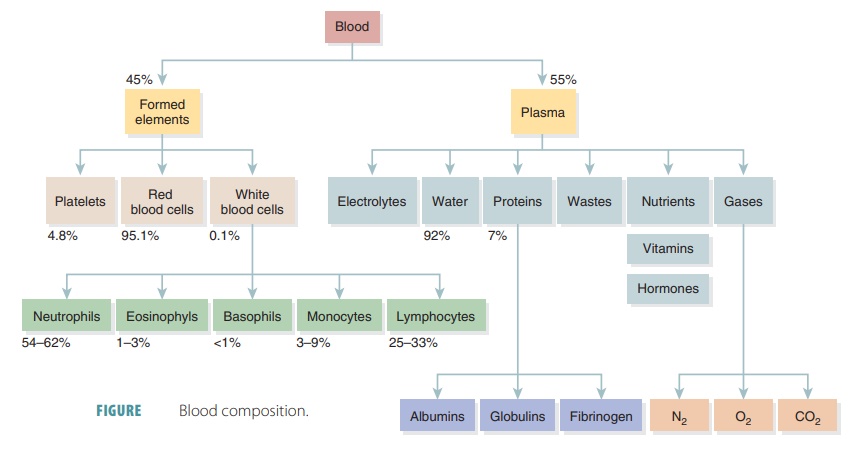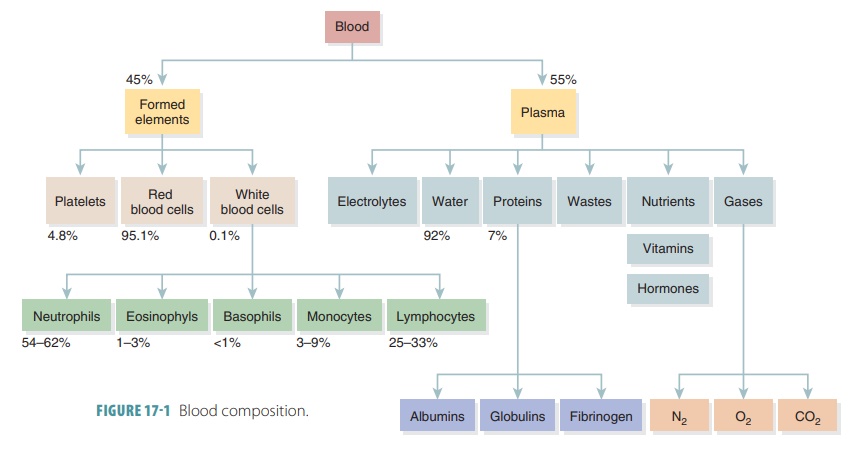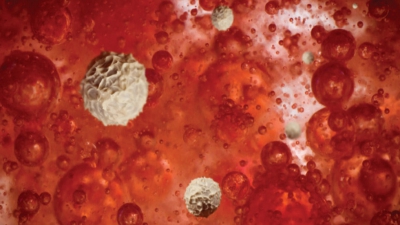Blood Components
| Home | | Anatomy and Physiology | | Anatomy and Physiology Health Education (APHE) |Chapter: Anatomy and Physiology for Health Professionals: Blood
The blood is made up of cells, fragments of cells, and dissolved biochemicals containing nutrients, oxygen, hormones, and wastes.

Blood
Components
The blood is made
up of cells, fragments of cells, and dissolved biochemicals containing
nutrients, oxygen, hormones, and wastes (FIGURE 17-1). It helps to distribute body heat and maintain stable
interstitial fluid. Blood is the only fluid connective tissue, with its cells
suspended in a liquid, the extracellular matrix. It is heavier and thicker than
water, is the only fluid tissue in the body, and is a homogenous liquid. This means it has a similar composition
throughout. Blood contains formed elements such as erythrocytes (red blood
cells) or RBCs, leukocytes (white
blood cells) or WBCs, and platelets.
Of these, only the WBCs are complete
cells, containing nuclei and organelles. Most of the formed elements exist in
the bloodstream for only a few hours or days before they are replaced by new
cells. Also, most of them do not divide and are replaced by stem cells that
continuously divide in the red bone marrow. The liquid portion of blood is
called plasma. The
combination of plasma and formed elements is called whole blood. When a blood sample is spun in a centrifuge, the
heavier formed elements sink, whereas the plasma rises. A thin, whitish-colored
layer called the buffy
coat is presentat the point where the RBCs join the plasma.
This layer is made up of leukocytes and platelets.



